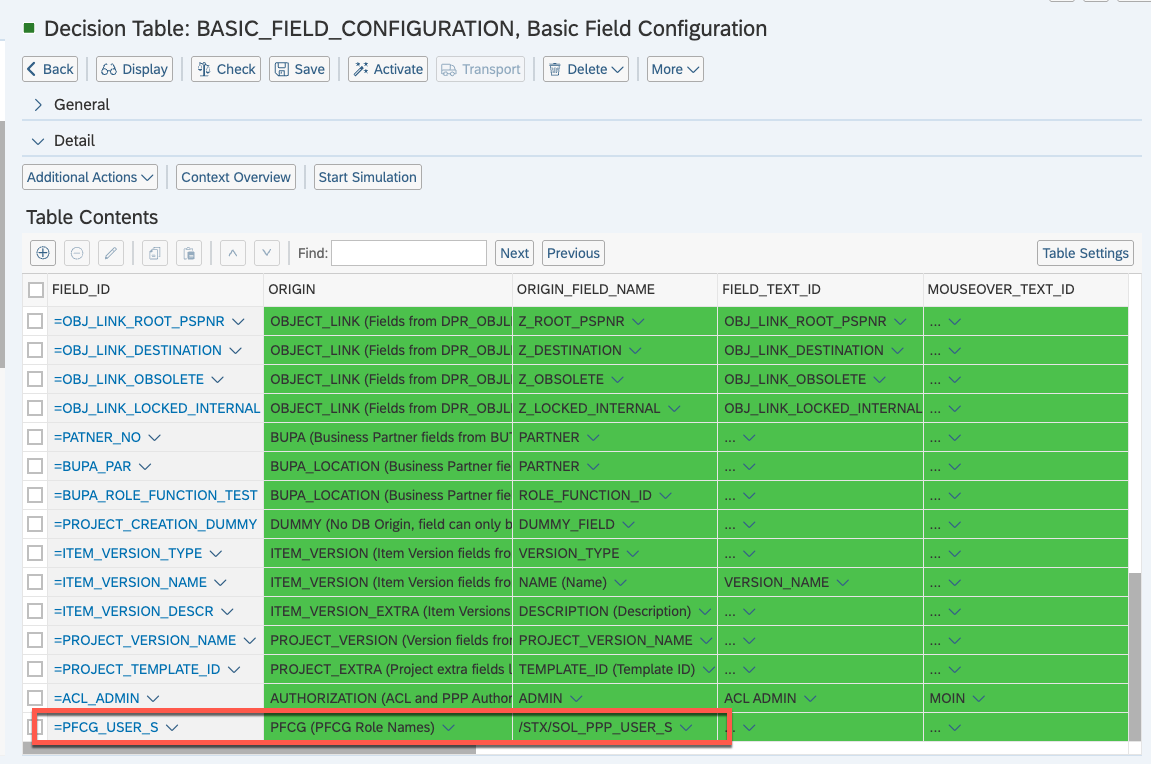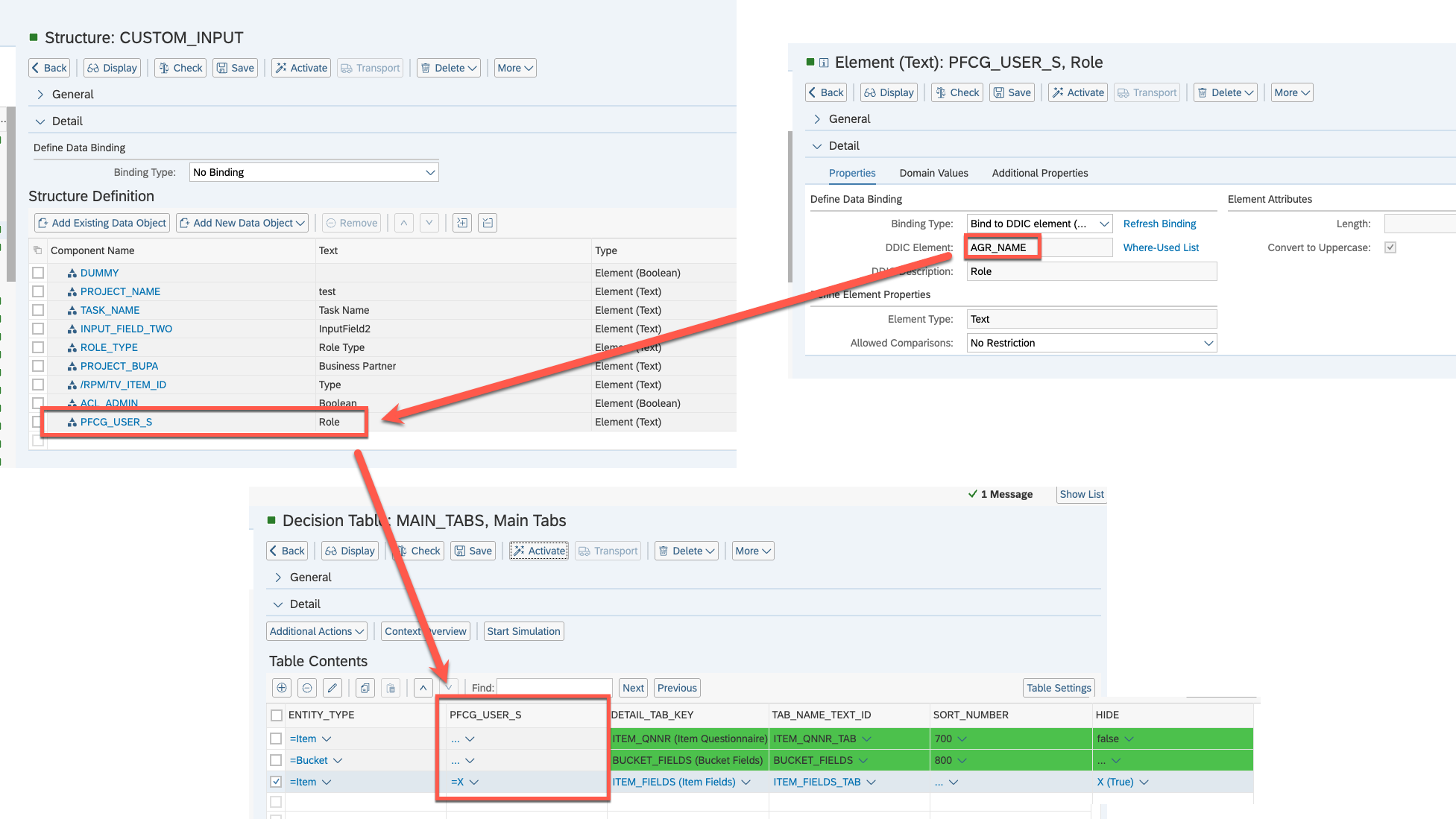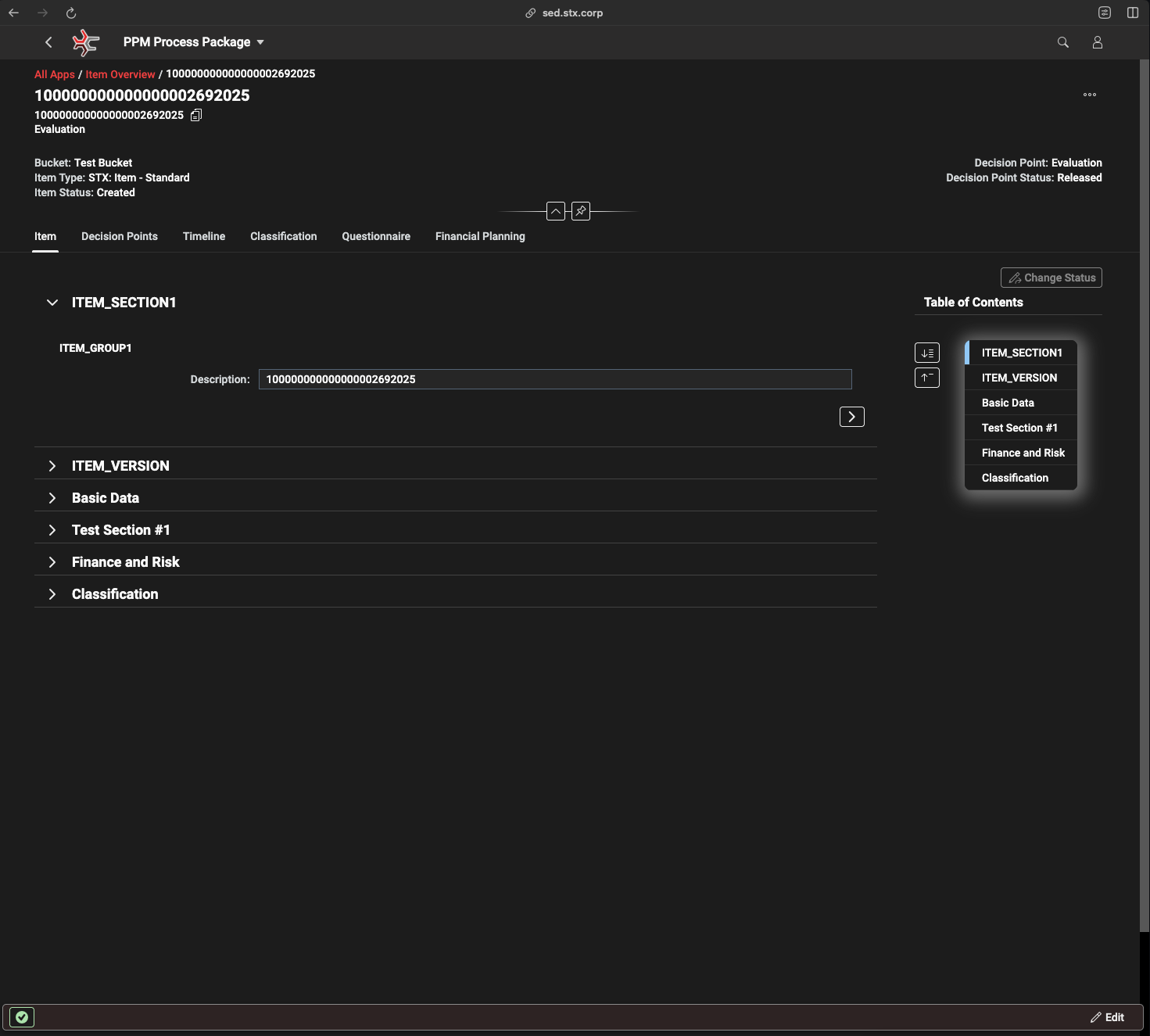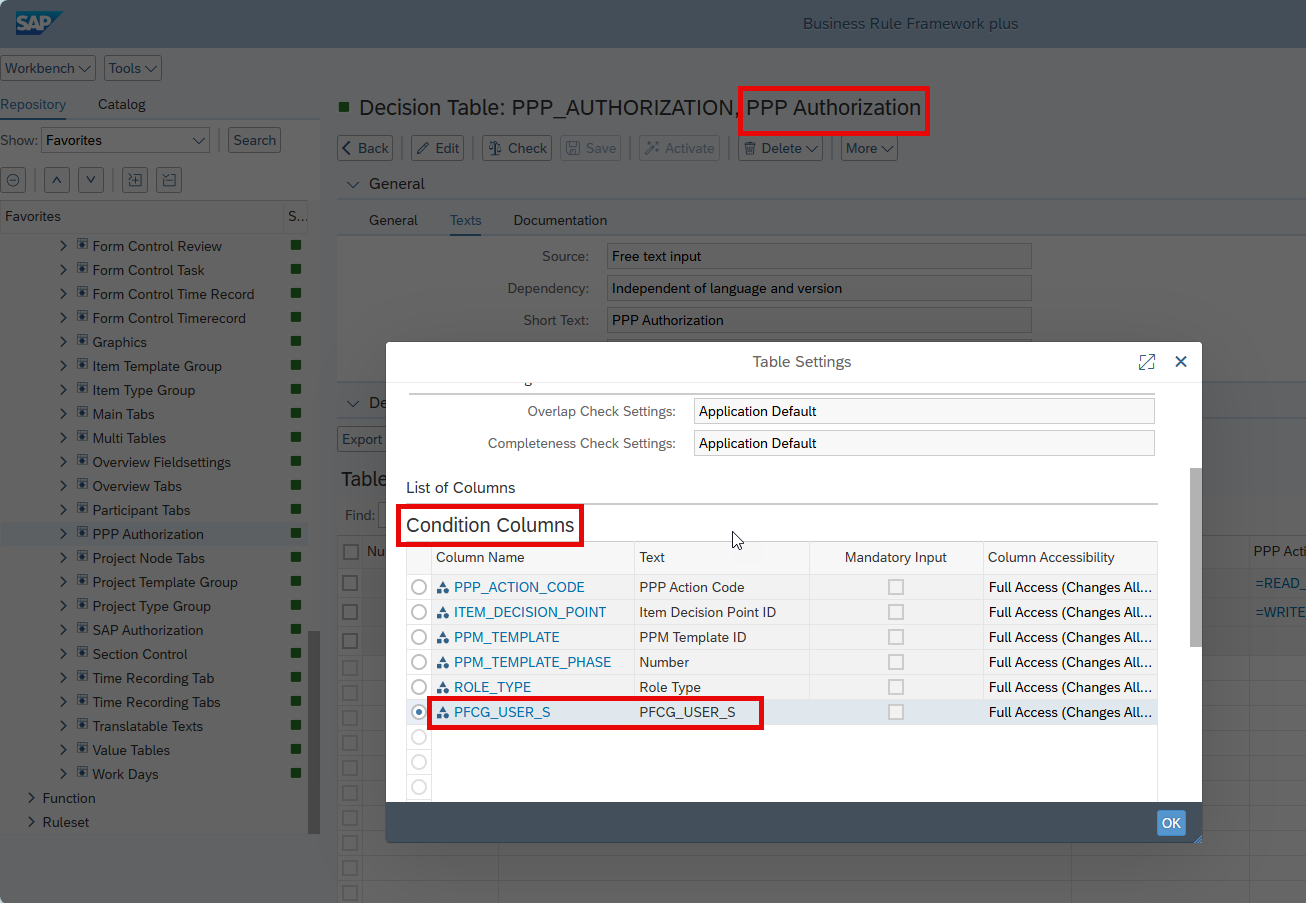Configuring User-Specific Field Settings Using PFCG Roles in BRF+
This instruction provides a step-by-step guide to configure PFCG roles in BRF+ for customizing user interfaces and controlling access to specific actions based on user roles. It explains how to use PFCG roles to modify BRF+ decision tables for customizing UI elements (Example A) and PPP authorizations (Example B).
How to Enable PFCG in BRF+
Step 1: Add PFCG Role to Basic Field Configuration Decision Table
-
Navigate to the Basic Field Configuration decision table.
-
Create a new field with the following settings:
- Origin: Choose
PFCG - Origin Field Name: Set the relevant PFCG Role (for instance
/STX/SOL_PPP_USER_S) - Display Type: Select
INPUT_ONE_LINE
- Origin: Choose
This field will determine the condition based on the selected PFCG Role.

Step 2: Add the PFCG Role to Custom Input
- This will allow the field to be used in condition columns within the decision table.
Example A: PFCG Role-Based UI
This example demonstrates how to use PFCG Roles in BRF+ to control UI elements dynamically. Specifically, we will show how to hide the “Item” Detail Tab based on the assigned PFCG Role.
Step 3a: Add PFCG Role as a New Input Column in the Relevant Decision Table (Fieldgroup/Tabs/Sections)
-
Open the MAIN TABS Decision Table (or any other decision table where role restriction is required like Fieldgroup or Section Control)
- Add the newly created PFCG Role field as an input column (see Custom Input: Adding Custom Condition Columns to a BRF+ Decision Table).

Step 4a: Test the Configuration
- Reload the application to apply the changes.
- Verify that users assigned to the PFCG Role (e.g.,
/STX/SOL_PPP_USER_S) can no longer see the “Item” Detail Tab.
Outcome
The “Items”-Detail Tab should be hidden for users with the specified PFCG Role, as shown below:
- Without role restrictions: (“Item” Detail Tab is visible)

- With role restrictions: (“Item” Detail Tab hidden)

Example B: PFCG Roles in BRF+ & PPP Authorizations
This example demonstrates how to customize PPP Authorizations using PFCG Roles to enforce granular permission controls.
Step 3b: Add PFCG Role as a New Input Column in the PPP Authorization Table
-
Open the PPP Authorization Decision Table.
- Add the newly created PFCG Role field as an input column (see Custom Input: Adding Custom Condition Columns to a BRF+ Decision Table).

Step 4b: Customize PPP Authorization based on the PFCG Role
-
For adjusting PPP Authorization enter:
- PFCG Role: set to true for customizing parameters for this specific role (PFCG_USER_S in this example)
- PPP Action Code: Choose between any of the given PPP Authorization Codes (WRITE_ITEM_FIELDS in the example)
- Allowed: Set to true or false. This determines, if the Authorization is given or not (set to false in this example).

Expected Outcome:
- Users with the configured PFCG Role will or will not be able to perform specific actions based on the PPP Authorization decision table settings. (In this example the user with PFCG role PFCG_USER_S will not be able to fill in Item fields)
See Also
- Unknown Post
- Custom Input
- Basic Field Configuration Overview
- Custom Input: Adding Custom Condition Columns to a BRF+ Decision Table
Keywords
- PFCG Roles
- BRF+ Configuration
- Field Settings
- Role Restriction
- Custom Input